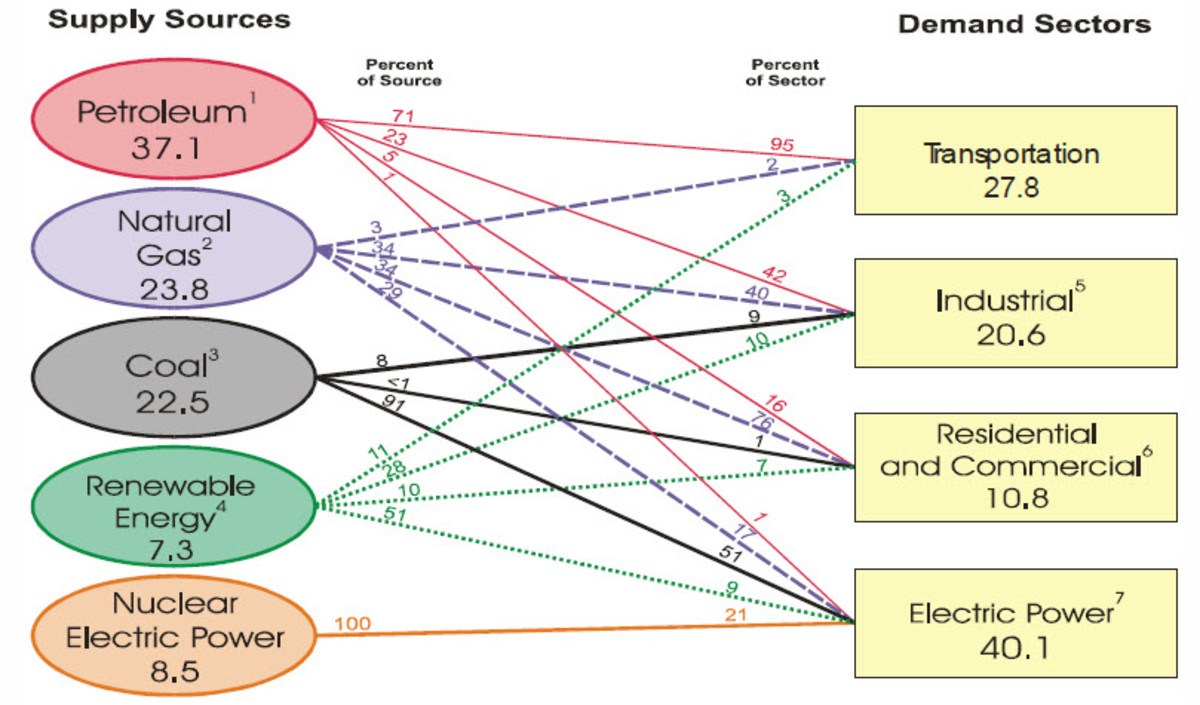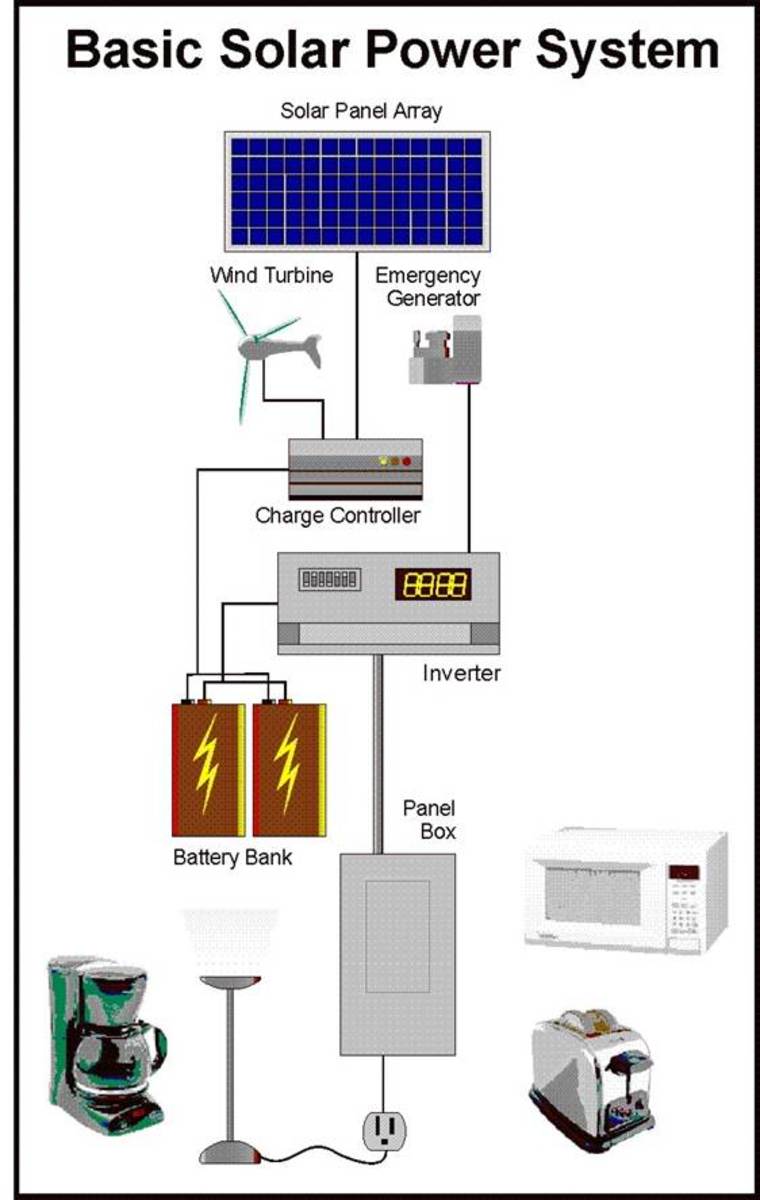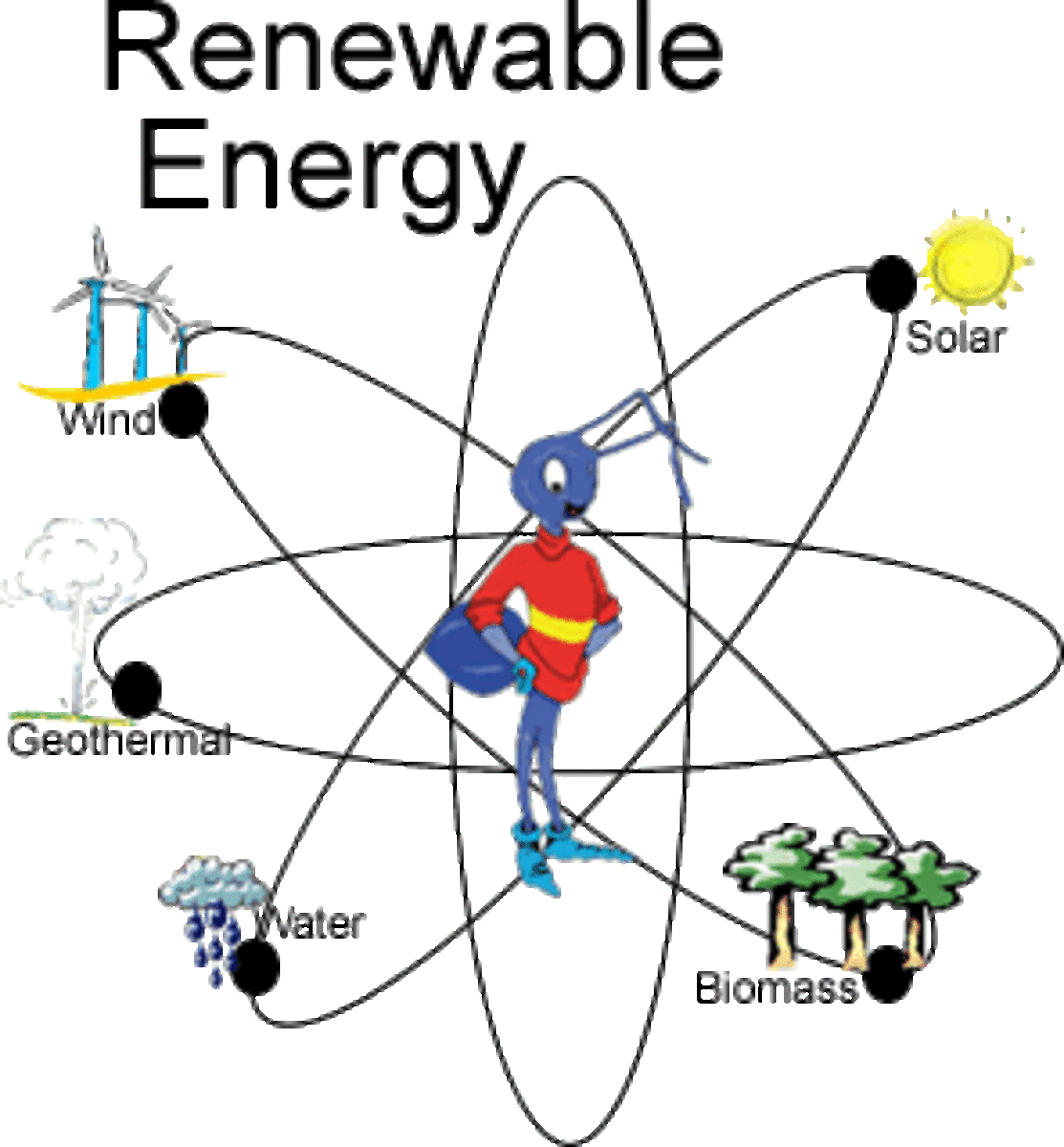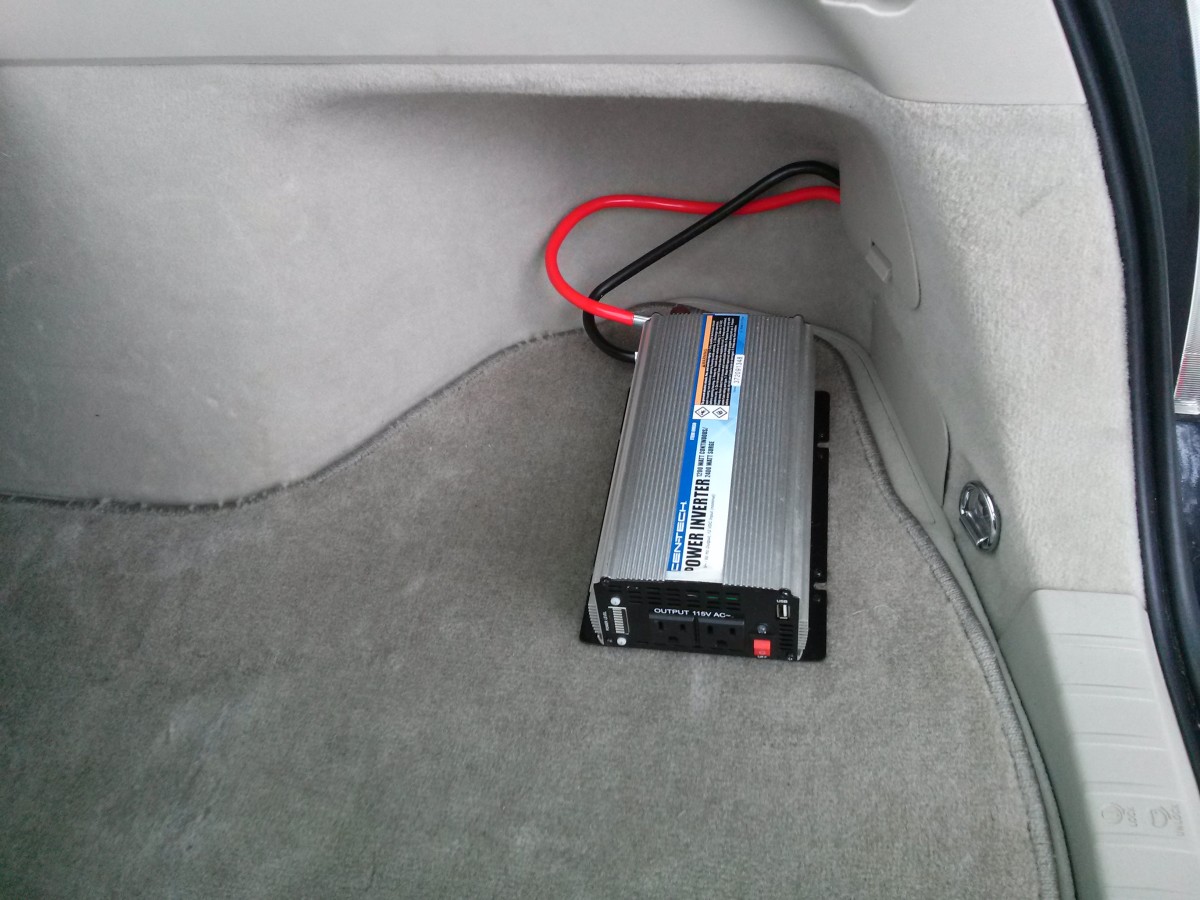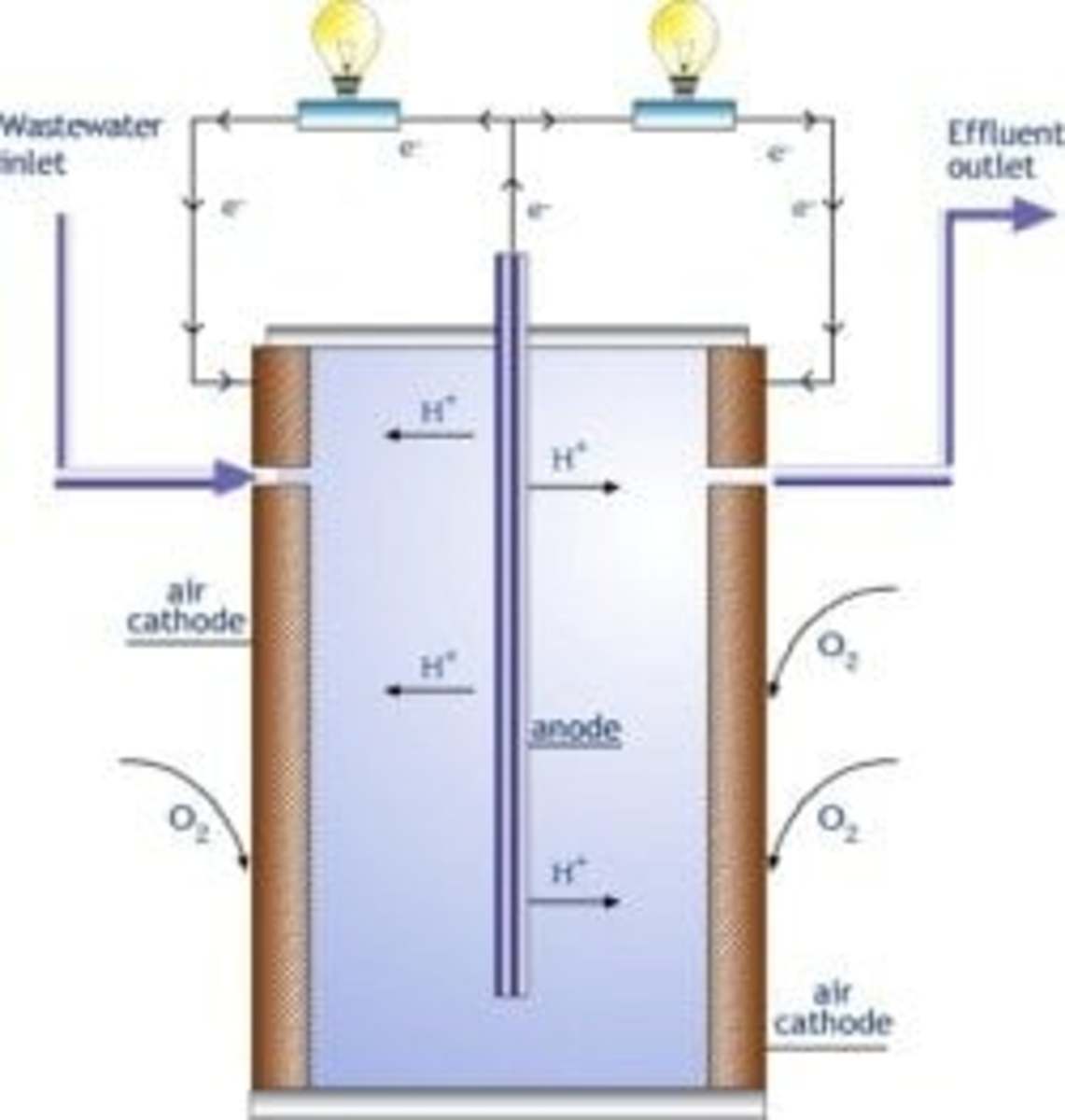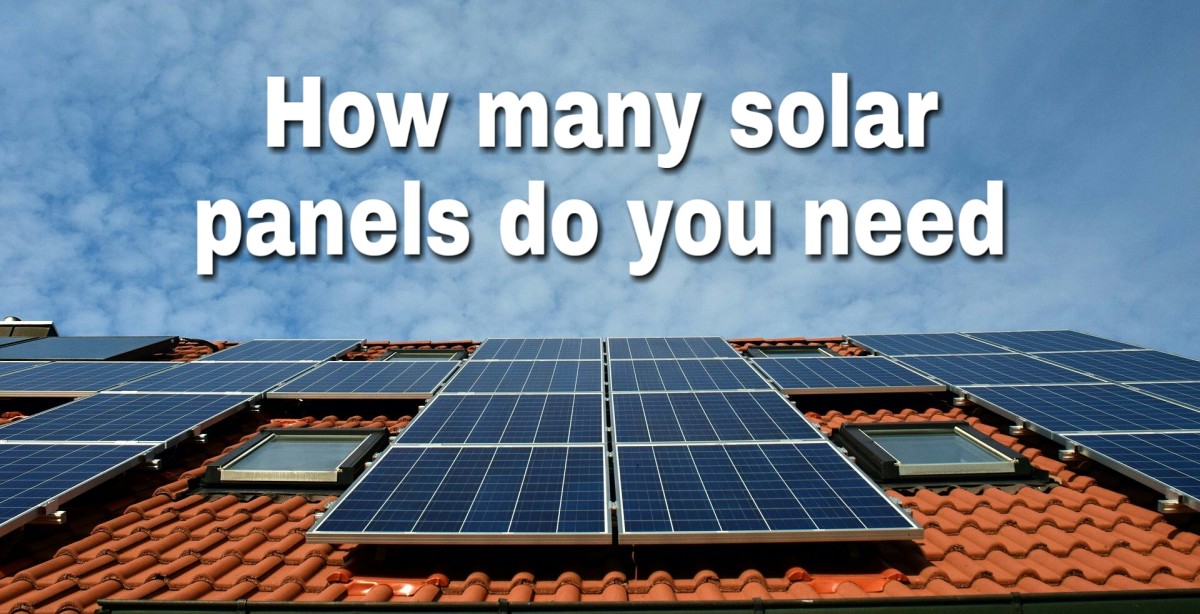Understanding What a Power Inverter Is
Power Your Home With Batteries
There are many components in a renewable energy home. Using green power seems to be the "in" thing these days but few people have the slightest clue when it comes to what that actually means.
Whether a home is powered with solar panels, wind turbines, or micro hydro, one component that is common to all of the systems is the 12v power inverter.
Before I explain what a power inverter actually is, you need to understand a bit about electricity. We won't get into too much detail here. Just a couple of basics.
The power that is piped into our homes from the local power company, is supplied at 120 volts of alternating current (VAC). Solar panels, wind turbines, and micro hydro turbines produce 12, 24, 36, or 48 volts of direct current (VDC) depending on how they are wired. You cannot directly connect renewable energy producing devices to standard household appliances.
So we have a problem. How can we power all of our traditional household appliances with renewable energy if the voltage is not compatible? The answer lies in a piece of technology called a power inverter. A power inverter takes low voltage DC power and changes it into 120 VAC power.
The way that these renewable energy systems typically work is pretty interesting. We'll use solar panels as our power source here.
- The sun shines on the solar panels and they produce DC electricity.
- The solar panels are connected via wires to a device called a charge controller.
- The charge controller ensures that the house batteries don't get over charged.
- The charge controller is connected to a bank of deep cycle batteries via heavy gauge wire.
- The bank of batteries are connected to the power inverter with some more heavy gauge wire. This is where the power is converted into 120 VAC electricity.
- The 120 VAC power is delivered to the house electrical breaker box.
- The 120 VAC power is distributed to each electrical outlet in the house and is ready for use.
Power inverters come in varying voltages depending on how the solar panels and battery bank is wired. Most small applications like an small off the grid cabin, would use a 12v inverter. For larger applications like full scale homes or businesses, higher voltage systems are used. When you step up the voltage, the electricity is more efficiently transferred over long wire runs.
For example, a 12 volt solar panel that is 30 feet away from the house batteries won't be very efficient. By the time the electricity gets to the battery, it may have dropped to 11 or fewer volts. The longer the run, the more the voltage loss. You can compensate for this voltage loss by using very heavy gauge wires but this becomes expensive and it's not very practical.
If the solar panels cannot be positioned fairly close to the battery bank, it's generally more efficient to wire the panels together to produce a higher voltage system. If you wire two 12 volt panels together, you essentially end up with one 24 volt system. More panels can be wired together to produce the required voltage.
So there you have it. With a solar power inverter, you can convert power produced by the sun, wind, or micro hydro in to electricity that can be used in your home.
Auto Power Inverter
Auto power inverters are becoming more and more popular in vehicles these days. With a car power inverter you can power all kinds of electrical devices right from your vehicle. An auto power inverter should be sized according to the size of the load that you would like to run. For example if you would like to run a power saw with your power invertor, then you should have a large 12v inverter like a 3000 watt unit.
If you simply want to charge a laptop battery with your 12 volt power inverter, you can get by with purchasing a very small unit. Perhaps a 100 watt unit will work fine.
Related Reading
- 12v Power Inverter
Learn all about the 12v Power Inverter in this very informative blog. You won't want to miss this one!
Alternative Energy Poll
Do You Think You Will Ever Power Your Home With Alternative Energy
Power Inverter Video
Here is a short video showing a pure sine wave inverter.

